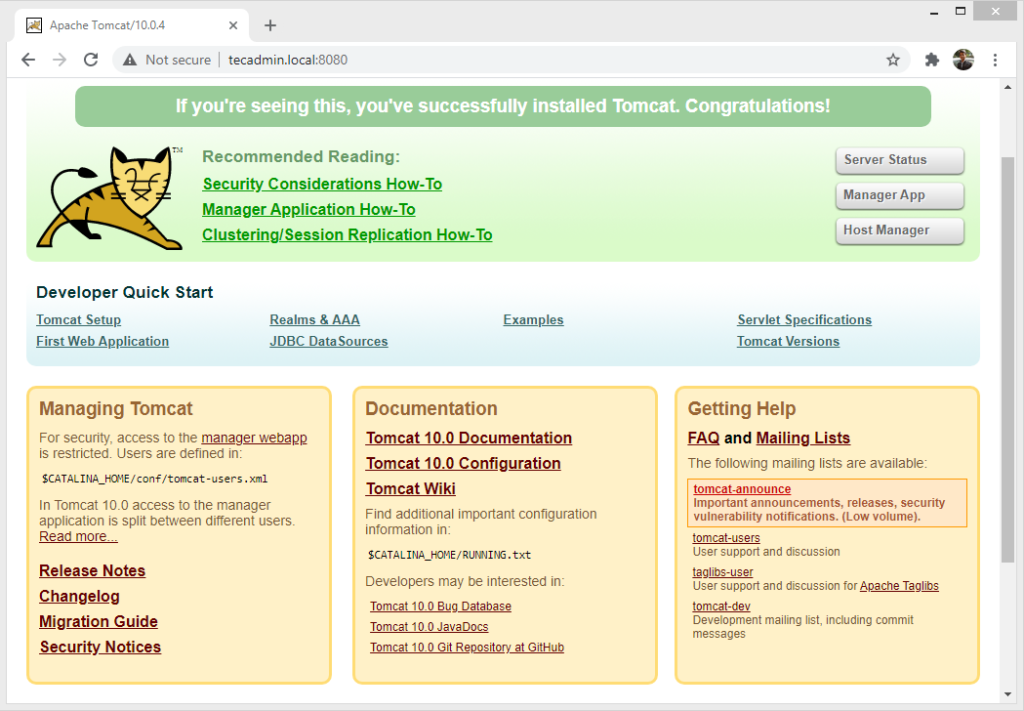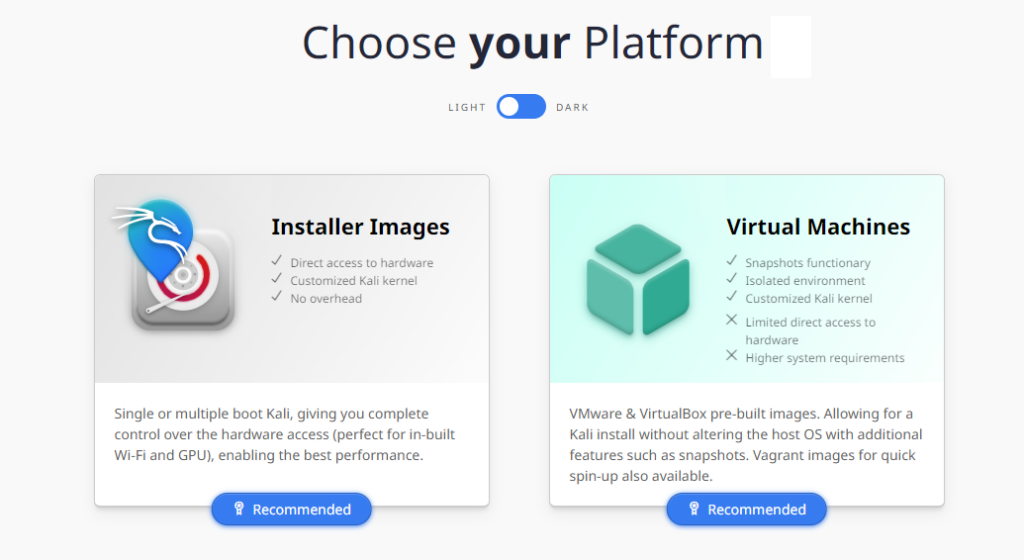A prime number is a number greater than 1 that can only be divided by 1 and itself. In this article, we will learn how to write a simple shell script to check if a number is prime. We will use Bash, a popular shell language used on Unix-like systems like Linux. A shell script is a small program that runs commands either from a file or from what you type. Shell scripts are useful because they help automate tasks, and in this case, they can help us solve a math problem like checking if a number is prime. Basic…
Author: Rahul
Apache Tomcat is an open-source web application server designed for hosting Java-based applications. It is developed by the Apache foundation and still provides upgrades and features. It’s easy to install and use, and provides a powerful platform for web applications. In this tutorial, we’ll walk you through the steps of installing Tomcat 10 on Ubuntu 22.04. We’ll also discuss some important concepts related to the installation, such as setting up the environment, downloading and installing the necessary packages, and configuring the Tomcat instance. Prerequisites Before you start, you need: A fresh Ubuntu 22.04 installation Access to a user account with…
Kali Linux is a Debian-based Linux distribution developed for advanced penetration testing and security auditing. It contains a multitude of tools that can help users conduct everything from simple vulnerability testing to complex network intrusion examinations. Here is your ultimate guide to getting started with Kali Linux, from downloading the software to installing it on your device. Step 1: Requirements Before you can download Kali Linux, you need to make sure your system can run it. The minimum requirements are: A minimum of 20GB hard disk space for installation A minimum of 2GB RAM (4GB recommended for smooth functioning) A…
C, as a programming language, possesses a wide range of built-in functions. One such critical function is printf(), which is extensively used for output formatting. The printf() function is a part of the standard library and comes under the category of Input/Output functions. This function serves as the principal means to produce output from a C program. This article will delve into an exhaustive understanding of the printf() function in C programming. Basics of printf() In its simplest form, the printf() function is used to print the “Hello, World!” text on the console.
1 2 3 4 5 6 | #include <stdio.h> int main() { printf("Hello, World!\n"); return 0; } |
printf() function’s general syntax is:
1 | int printf(const char *format, ...); |
…
Lexical order, also known as lexicographic order, dictionary order, or alphabetical order, is one of the most fundamental ways of organizing and comparing strings in almost every aspect of computer science, linguistics, and information processing. It’s a system that most of us learned early in our education, and yet, its universal significance is frequently overlooked. This article serves as a comprehensive guide to understanding the concept of lexical order and its widespread applications. What is Lexical Order? Lexical order is a method used to arrange words based on the alphabetical order of their component letters. This ordering system has been…
Creating a user in PostgreSQL and assigning permissions might seem complicated, but it’s quite straightforward once you understand the basics. PostgreSQL is a powerful database management system used to handle data efficiently. To allow different people or applications to access the database, you need to create users and give them specific permissions. This process ensures that only authorized users can view or modify the data, keeping it secure and well-managed. In this guide, we will walk you through the simple steps of creating a user in PostgreSQL, creating a database and assigning them the necessary permissions, making it easy even…
The Fibonacci series, named after the Italian mathematician Leonardo Fibonacci, is an infinite sequence of numbers that has captivated mathematicians, biologists, artists, and philosophers for centuries. It appears mysteriously in a wide variety of scientific and natural contexts and has become an emblem of the unexpected mathematical beauty found in nature. Understanding the Fibonacci Series At its simplest, the Fibonacci sequence is a series of numbers where every number after the first two is the sum of the two preceding ones. Often starting at 0 and 1, the series goes: 0, 1, 1, 2, 3, 5, 8, 13, 21, 34,…
Armstrong numbers, also called narcissistic numbers, are special numbers in math that have a unique property making them fun to explore. They belong to number theory, a branch of mathematics that studies numbers and their relationships. Named after Michael F. Armstrong, these numbers are interesting because of their rare and special characteristic. Understanding Armstrong numbers can be a great way for beginners and students to get a deeper appreciation of mathematics and the amazing patterns that can be found within it. This exploration can spark curiosity and interest in more complex mathematical concepts. Definition An Armstrong number is a number…
Python, a versatile and powerful programming language, allows us to perform numerous tasks with ease, such as comparing numbers and determining the largest among them. In this article, we’ll walk through creating a Python program that finds the largest among three numbers. Python’s control flow statements, especially the if statement, make it simple to compare three numbers and determine which is the largest. Let’s first look at the basic logic, then move on to constructing our program. Basic Logic The logic for finding the largest among three numbers (let’s call them a, b, and c) goes as follows: First, we…
In the world of programming, palindrome numbers play a significant role due to their unique properties. A palindrome number is a number that remains the same when its digits are reversed. For example, 121, 3443, and 1221 are palindrome numbers. In this article, we will explore how to write a C program to check whether a given number is a palindrome or not. We will provide a step-by-step explanation along with an illustrative example. C Program to Check Palindrome Number Below is the C program that checks whether a given number is a palindrome or not.
1 2 3 4 5 6 7 8 9 10 11 12 13 14 15 16 17 18 19 20 21 22 23 24 25 | #include <stdio.h> int main() { int num, reversedNum = 0, originalNum, remainder; printf("Enter a positive integer: "); scanf("%d", &num); originalNum = num; // Reversing the number while (num != 0) { remainder = num % 10; reversedNum = reversedNum * 10 + remainder; num /= 10; } // Checking if the reversed number is equal to the original number if (originalNum == reversedNum) printf("%d is a palindrome.", originalNum); else printf("%d is not a palindrome.", originalNum); return 0; } |
Explanation: The program…


